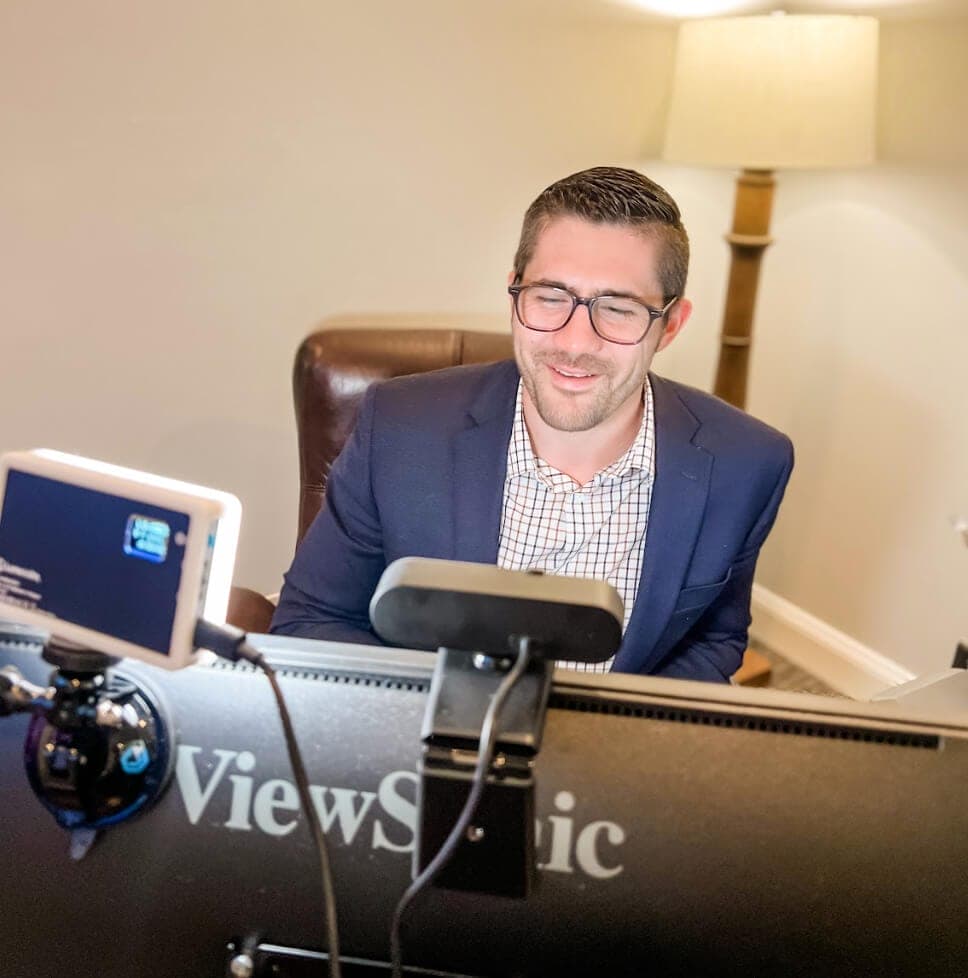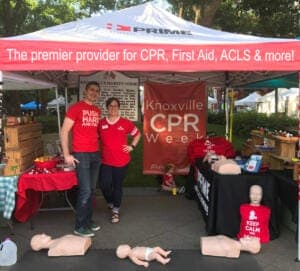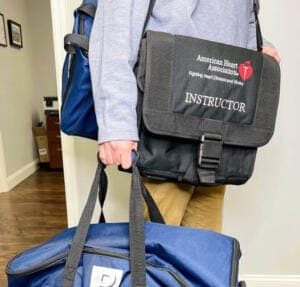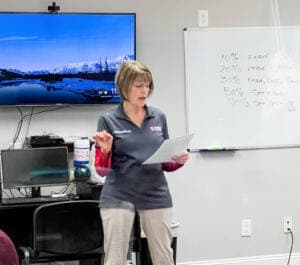How to: Hire and Maintain Quality Instructors

CPR classes depend on CPR instructors. It is critical that CPR instructors be well trained in the lifesaving skills they teach in order to be effective. Let’s discuss how to find, hire and retain good, quality Instructors.
The first advice we give to aspiring CPR businesses, is to hire an instructor almost from day one. The sooner you can bring another instructor on board, the sooner you will see your business grow. It may be difficult to understand until you do it, but even if you do not have a single client yet, we still reccomend hiring another instructor. The exercise of hiring an instructor, interacting and engaging with somebody else within your business helps a lot.

Additionally, staying ahead of demand will help ensure that you do not turn away business. Hiring sooner than later will help prevent business being bottle necked as you grow. It would be better to have someone and not need them, then to wait and try to hire when you are too busy to train someone. We suggest that even if you do not have a ton of classes give your instructor, give them at least one class a month. This will help you work out the logistics such as invoicing, payroll, and a second set of eyes on your systems and processes. Businesses that operate on a growth mindset are the businesses that succeed. Delegating roles and responsibilities to others is the only way you can continue to take on more and more business.
Businesses operated in by just one person allow an individual to work in their own way and be comfortable in their own processes. Often times, when you hire more people, you will experience growing pains and have inefficient processes revealed. When you are doing business on your own, you do what works for you, but when you bring other people in what works for you, may not work for them. These processes are oftentimes even simple things like: how do they get into the building, how are they going to access equipment, and how long can they have equipment for when they’re going off to teach a class for you? It is important that you think through all of these things before you are forced to have to think about them and then end up scrambling.
Hiring early before you actually need to hire works tremendously for your business and will take you to the next level so much quicker.
How To Find Candidates
How do you find instructors? The first thing most businesses try is is word of mouth- you can ask friends and colleagues, “Hey do you know anybody who’d be interested?” However, that only lasts for so long. Typically people run out of resources and connections after a while. Looking to friends of friends connections by sharing a post on Facebook or LinkedIn can produce really good connections.
At the end of the day, when you need to find instructors and your network is tapped out, we have seen the best response with Indeed. We recommend using an ad to write about your company and what you are looking for. It’s important that you explain what you are looking for because you do not want to waste your time talking with people who are just looking for a paycheck. Instead, you want to connect with people who can align with your companies vision and care about what you do.
In your job description, talk about values and work to draw people in based on that. We always say that we hire for character and train for talent. This is critical and has contributed to a lot of our success. High quality and character driven people will help your organization succeed and do more than just get classes covered.
Search Health & Safety Instructor Directories.
Hiring people that are already CPR Instructors can save you a lot of time in training. Even if they don’t teach the brand of CPR (AHA, ARC, or HSI) that you normally teach, it can be easier to bridge over an instructor. Be sure to search the Class Eagle Health and Safety Directory for instructors near you.
Furthermore, make sure you have a business account on the directory site to get class leads as well. There is no cost to use the basic version of the site!
What to look for in an Instructor Candidate

Looking for a baseline of professionalism is important. We suggest requiring a resumė. If there is no resumė attached to our candidates application, then we are not hiring them. We want people of a certain caliber who have a professional looking resumė and then we review that resumė.
We start by asking questions such as “how long has this person held a job?” Looking for longevity in positions is important. People bouncing from job to job every year may not be worth your time investment.
If they send us a resume with a huge list of accolades, we probably are not going to go for them. The first reason being, there is a real concern and an issue with a lot of people wanting to become a CPR instructor just to get another feather in their cap. These candidates will have a list of their certifications and they are just collectors for more certifications. They will have for a huge resume and a huge amount of experience, but as soon as they get that feather in their cap and they become an instructor they quickly move on to the next thing.
Another reason why you may not want to hire someone with an expansive resumė, is that it can indicate a little bit of an ego as well. We still reach out to these candidates for a phone interview, but it is generally pretty evident that they are not going to be a good fit for our company. This isn’t to say that you should hire people without a lot of experience, but rather look for people with humility and a streamlined resume.
Conducting Interviews
Once you cull resumes, pick a handful of people and start doing phone interviews. Talking on the phone helps gauge interest and fit before investing the time in an in person, formal interview. You should have a set of questions that you ask each candidate. These questions could be things like:
- What do you know about our business?
- What draws you to working for our business?
- What are your career objectives?
You should listen to see how the people resonate with your values and mission. It can be surprising how indifferent some people are and how honest they are about it. These people you can quickly mark off your list.

After phone interviews, we recommend setting up a video interview. This will help you see how they present themselves and make sure that what they said in the phone interview matches their face to face professionalism and character.
In our business, if people do well in the video interview, then we hire them on. We use a program called “Zenefits” to handle our HR. It automates sending all hiring paperwork. Paperwork, independent contractor agreements, and several other policies and procedures are signed electronically. After this is complete, we set up an in person orientation. If the new hire is not already an instructor, we will put them through an instructor class and then do an orientation.
If you decide to investment the time in making a new hire an instructor, it may be prudent to have an agreement with them that they teach a certain number of classes for you. This will guarantee that your time is paid for in making them an instructor. Some companies may opt to make this a formal agreement on paper. However, we have had a positive experience just having an upfront conversation about this.
Training and Orientation
Our instructor orientations take about two hours. We run orientation off a checklist that is about five pages long. The orientation is very systematic for two reasons: We want to set instructors up for success and we want to make sure that they are representing our brand well. A thorough orientations makes sure that they feel confident when they come to teach their first class.

Additionally, we also want to have documentation of the orientation. Standardization of this process will help your business grow while maintaining quality. You do not want everybody getting a different type of training. We recommend developing your own orientation checklist, even for your first hire. You will likely grow that document and change it over time, but it’s important to start with something.
Conclusion
This process is tried and true for us. It works well and we have a pretty good retention rate. Obviously, there is a shelf life of any employee. Many people do move on as it is more a part time job or supplemental income. While it’s sad to see employees who often become friends in this industry move on, it is okay and we are grateful for the time we have every good employee. We don’t have hard feelings when instructors decide to leave us because we want our instructors to be successful in life and be able to pursue their goals and their dreams.
Many of our best instructors have been nursing students, post military serviceman, or retired first responders. These are professional people in a unique stage of life looking for good income while they eventually move onto other things.


